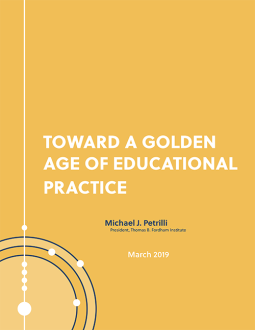In recent years, we have reached a homeostasis in education policy, characterized by clearer and fairer but lighter-touch accountability systems and the incremental growth of school choice options for families—but little appetite for big and bold new initiatives.
To be sure, there are still fights—battles in state legislatures between reform advocates and their opponents, and sometimes little skirmishes in Congress—but they are at the margins. The period of big new policy initiatives stemming from Washington or the state capitals appears to be over, at least for now.
This state of play will not last forever, but it provides a real opportunity while it is here.
The opportunity is, for us as a field, to finish what we started, to usher in a Golden Age of Educational Practice. To implement higher standards with fidelity. To improve teacher preparation and development. To strengthen charter school oversight and quality. To make the promise of high-quality career and technical education real.
But how can we get 14,000 local school systems and 7,000 charter schools pursuing better outcomes for kids if big new policy initiatives are off the table?
In this new monograph, Toward a Golden Age of Educational Practice, Michael J. Petrilli, the president of the Thomas B. Fordham Institute, explores these questions and identifies concrete actions that would make evidence-based practice a likelier reality in our schools. They include:
- Supporting efforts to collect richer information about classroom practice;
- Funding the development of new organizations of educators to identify and disseminate evidence-based practices;
- Scaling up networks of schools committed to using evidence-based practices in their classrooms, especially in the charter sector;
- Investing in the sales and marketing of high-quality, standards-aligned instructional materials; and
- Creating a national infrastructure for improving the work of instructional coaches.
While policymakers might be taking a break from education policy, we cannot afford to take a break from educational improvement. America’s children are waiting.




